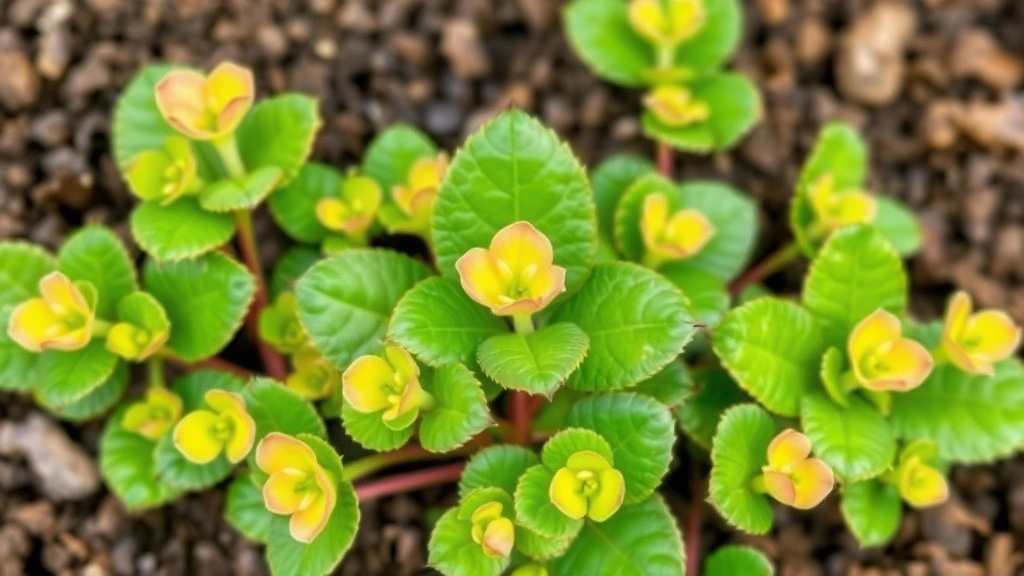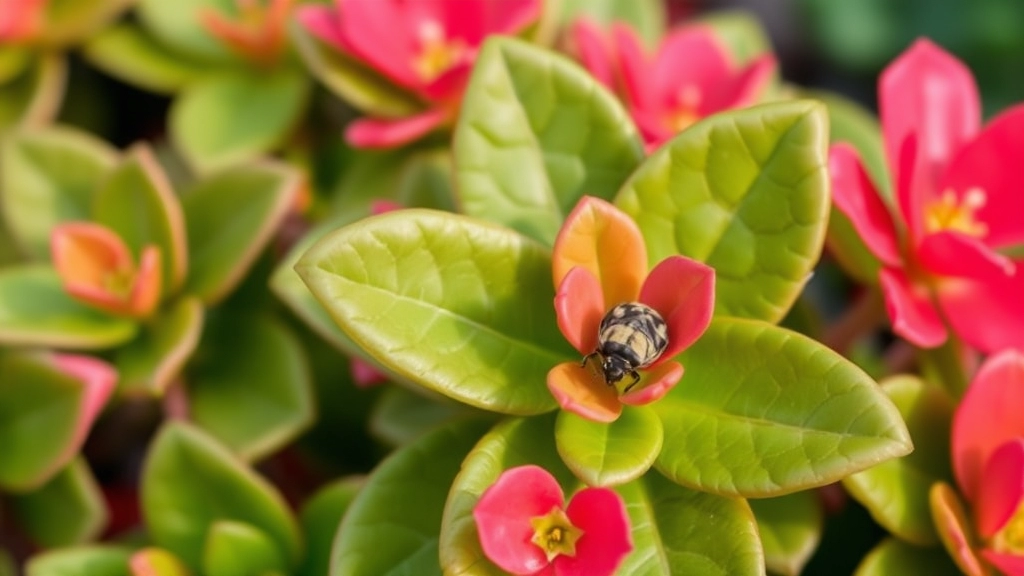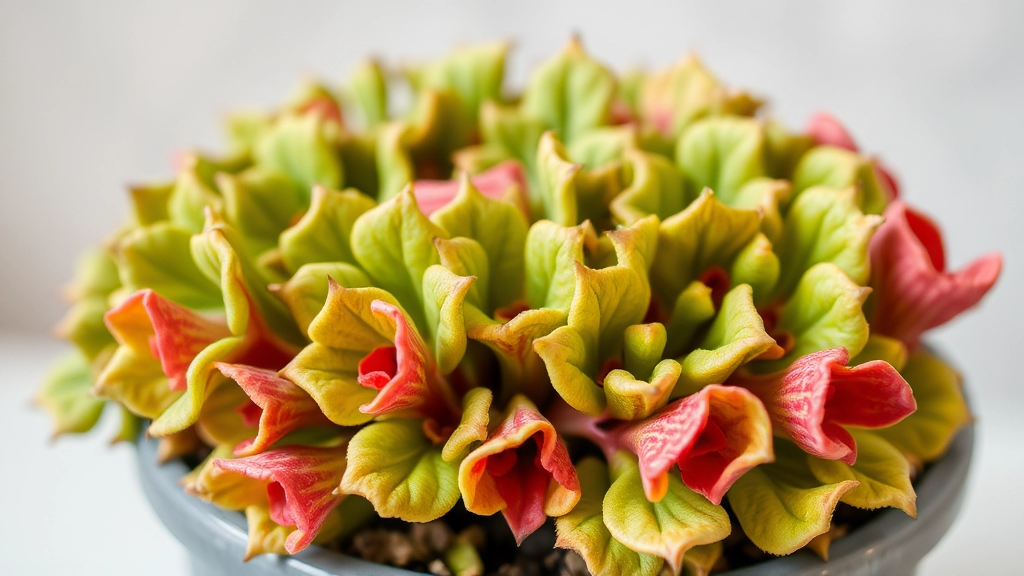Kalanchoe Leaf Drying Issues
Are your Kalanchoe leaves drying out and you’re not sure why? You’re not alone. Many plant enthusiasts face this issue, often due to improper watering, lighting problems, temperature stress, or even pest infestations. Understanding the root cause can help you bring your plant back to vibrant health.
Let’s dive into the common reasons for Kalanchoe leaves drying out and explore practical care tips to keep your plant thriving. From watering techniques to identifying sunlight issues, we’ll cover everything you need to know to ensure your Kalanchoe remains lush and green.
Common Reasons for Kalanchoe Leaves Drying Out
Have you noticed your Kalanchoe leaves wilting or drying out? This is a common concern for many plant enthusiasts. Understanding the reasons behind this issue is crucial for restoring your plant to its vibrant self.
1. Underwatering
One of the primary culprits behind drying leaves is underwatering. Kalanchoe plants thrive in well-drained soil but require consistent moisture. If the soil feels bone dry, it’s time to give your plant a drink.
- Signs of underwatering:
- Leaves appear shrivelled
- Soil is dry to the touch
- Plant looks droopy
2. Overwatering
Conversely, overwatering can lead to root rot, which also results in drying leaves. It’s a delicate balance.
- Signs of overwatering:
- Yellowing leaves
- Mushy stems
- Foul smell from the soil
3. Insufficient Light
Kalanchoe plants love bright, indirect sunlight. If your plant isn’t getting enough light, it may struggle.
- Signs of insufficient light:
- Stretching towards the light source
- Faded leaf colour
- Leaves dropping off
4. Temperature Stress
Kalanchoe plants prefer temperatures between 15°C and 25°C. Extreme fluctuations can cause stress, leading to drying leaves.
- Signs of temperature stress:
- Leaves curling
- Sudden leaf drop
- Stunted growth
5. Pest Infestation
Pests such as aphids or mealybugs can sap the vitality from your Kalanchoe, causing leaves to dry out.
How to Properly Water Kalanchoe Plants
So, you’ve noticed your Kalanchoe leaves drying out, and you’re probably wondering if you’re watering it right.
Let’s dive into the nitty-gritty of watering this resilient little plant.
Understanding Watering Needs
Kalanchoe is a succulent, which means it stores water in its leaves. This makes it a bit different from your average houseplant. Here’s how to keep it happy:
- Check the Soil: Before you even think about watering, stick your finger about an inch into the soil. If it feels dry, it’s time to water. If it’s still damp, hold off for a bit longer.
- Watering Technique: When you do water, give it a good soak. Make sure the water seeps out of the drainage holes at the bottom of the pot. This ensures the roots get a nice drink.
- Frequency: Generally, Kalanchoe likes to be watered every 2-3 weeks. But remember, it’s all about the soil moisture. In the winter, you can cut back even more.
- Avoid Overwatering: This is a biggie. Too much water can lead to root rot, which is a death sentence for your plant. If you notice yellowing leaves, that’s a red flag.
Signs of Underwatering
If your Kalanchoe is looking a bit sad, here are some signs you might be underwatering:
- Leaves are wrinkled or shriveled.
- The plant looks droopy or limp.
Watering Schedule Tips
- Seasonal Adjustments: In the warmer months, your Kalanchoe may need more water. In the winter, it goes dormant and needs less.
- Humidity Matters: If you live in a particularly dry climate, you might need to check on your plant more often.
Identifying Sunlight and Lighting Issues
Have you noticed your Kalanchoe leaves drying out despite your best care efforts? One often overlooked factor could be the amount and quality of light your plant is receiving.
Kalanchoe plants thrive in bright, indirect sunlight, and any disruption to their lighting conditions can lead to stress and drying leaves. Here’s how to assess and optimise the lighting for your Kalanchoe:
- Assess the Light Source:
- Ideally, place your Kalanchoe near a south or west-facing window.
- Avoid direct sunlight, especially during the hottest part of the day, as this can scorch the leaves.
- Monitor Light Duration:
- Kalanchoe needs around 6 hours of light daily.
- If you notice your plant stretching towards the light, it’s a sign it’s not getting enough.
- Consider Artificial Lighting:
- If natural light is limited, consider using a grow light.
- Position it about 12-18 inches above the plant for optimal growth.
- Rotate Your Plant:
- To ensure even growth, rotate your Kalanchoe every few weeks.
- This helps all sides receive adequate light.
- Watch for Leaf Changes:
- If leaves are turning yellow or dropping, it could indicate too much direct sunlight.
- Dark green leaves might suggest insufficient light.
By ensuring your Kalanchoe receives the right amount and type of light, you can significantly improve its health and appearance. For more detailed care instructions, check out this complete guide on caring for Kalanchoe Tomentosa. Additionally, if you are interested in learning about the ideal temperature for Kalanchoe growth, visit our temperature guide for Kalanchoe Blossfeldiana.
Soil and Drainage Solutions for Healthy Kalanchoe

Have you noticed your Kalanchoe leaves drying out despite your best care? One often overlooked factor could be the soil and drainage conditions.
Choosing the Right Soil
The right soil mix is essential for Kalanchoe health.
- Cactus or Succulent Mix: These blends allow for excellent drainage, which is crucial for preventing root rot.
- DIY Mix: Combine potting soil with sand or perlite in a 2:1 ratio to enhance drainage.
Ensuring Proper Drainage
Even the best soil can fail if drainage isn’t adequate.
- Pot Selection: Always use pots with drainage holes.
- Layering: Consider adding a layer of gravel or small stones at the bottom of the pot to further improve drainage.
Signs of Poor Soil Health
Keep an eye out for these signs indicating your Kalanchoe might be suffering from poor soil conditions:
- Yellowing leaves
- Wilting despite adequate watering
- A foul smell from the soil
Repotting for Better Health
If you notice these signs, it might be time to repot your Kalanchoe.
- Timing: Spring is the best time for repotting.
- Process: Gently remove the plant, shake off the old soil, and place it in fresh, well-draining soil.
Temperature Sensitivities and How to Avoid Stress
Have you ever noticed your Kalanchoe plant wilting or dropping leaves, and wondered if temperature might be the culprit?
Kalanchoe plants are quite sensitive to temperature fluctuations, which can lead to stress and ultimately affect their health.
Dealing with Pests Affecting Kalanchoe Leaves

So, you’ve got a Kalanchoe that’s looking a bit worse for wear, and you suspect pests might be the culprits. It’s a common worry, and trust me, you’re not alone in this.
Common Pests to Watch For:
- Mealybugs: These little white fluffballs love to suck the sap from your plant.
- Aphids: Tiny green or black bugs that can multiply quickly.
- Spider Mites: These are often too small to see but can leave tiny webbing on your leaves.
Signs of Infestation:
- Yellowing leaves
- Sticky residue (honeydew) on leaves
- Webbing between leaves
How to Deal with Pests:
- Inspect Regularly: Check your plant weekly for any signs of pests. Early detection is key!
- Isolate the Plant: If you spot pests, move your Kalanchoe away from other plants to prevent spreading.
- Wash Them Off: A gentle spray of water can dislodge many pests. Just be careful not to soak the leaves too much.
- Use Insecticidal Soap: This is a safe and effective way to tackle many pests. Just follow the instructions on the label.
- Neem Oil: A natural remedy that can deter pests while being gentle on your plant.
Prevention Tips:
- Keep your plant healthy; a strong Kalanchoe is less likely to attract pests.
- Avoid overcrowding your plants; good airflow can deter infestations.
The Impact of Overfertilization on Kalanchoe Health
Have you ever noticed your Kalanchoe leaves turning yellow or dropping off unexpectedly? One common culprit might be overfertilization.
Kalanchoe plants thrive on minimal nutrients, and while fertilisation can boost their growth, too much can do more harm than good. Here’s how overfertilization can negatively impact your beloved succulent:
- Leaf Burn: Excessive fertiliser can cause the leaf edges to brown and crisp, leading to a stressed appearance.
- Root Damage: High concentrations of nutrients can lead to root burn, making it difficult for the plant to absorb water.
- Stunted Growth: Ironically, too much fertiliser can inhibit growth, causing the plant to become leggy or weak.
- Salt Build-Up: Over time, excess fertiliser can create a salt build-up in the soil, which can further harm the roots.
To prevent these issues, consider the following tips for fertilising your Kalanchoe:
- Use a diluted solution: Always dilute your fertiliser to half the recommended strength.
- Frequency: Fertilize only during the growing season, typically spring and summer, and avoid fertilising in the dormant months.
- Choose the right type: Opt for a balanced, water-soluble fertiliser specifically formulated for succulents.
By being cautious with fertilisation, you can maintain the health and vibrancy of your Kalanchoe. For more detailed care instructions, check out our ultimate guide on Kalanchoe care. Additionally, if you’re interested in propagation techniques, our guide on propagating Kalanchoe Blossfeldiana can be very helpful.
Tips for Reviving a Drying Kalanchoe Plant
So, your Kalanchoe plant is looking a bit worse for wear, huh?
Don’t panic just yet! There are some straightforward steps you can take to breathe life back into your plant.
Here are my top tips for reviving a drying Kalanchoe:
- Assess the Watering:
- Check if the soil is dry. If it is, give it a good drink.
- But remember, don’t drown it! Water thoroughly, then let it drain.
- Adjust Sunlight Exposure:
- Is your plant getting too much direct sun?
- Move it to a spot with bright, indirect light.
- Kalanchoes love light but can get sunburned too!
- Examine the Soil:
- Is the soil compacted?
- If so, consider repotting in fresh, well-draining soil.
- A mix designed for succulents works wonders! For more details, check out the best soil for Kalanchoe Blossfeldiana care tips.
- Check for Pests:
- Look closely at the leaves.
- If you spot any bugs, treat them with insecticidal soap or neem oil.
- Monitor Temperature:
- Keep your Kalanchoe in a warm spot, away from drafts.
- They prefer temperatures between 18-24°C (65-75°F).
- Limit Fertilizer:
- If you’ve been feeding it a lot, cut back.
- Too much fertilizer can stress it out. For more guidance, see our care guide for flowering Kalanchoe.
If you follow these tips, your Kalanchoe should start to perk up in no time!
Remember, plants are resilient.
With a bit of care, you can turn that drying Kalanchoe into a thriving beauty once again.
FAQs About Kalanchoe Leaves Drying Out
Why are my Kalanchoe leaves drying out?
Your Kalanchoe leaves might be drying out due to improper watering, poor soil conditions, or pest infestations. Ensure you are following the proper watering schedule and using well-draining soil.
How should I water my Kalanchoe plant?
Water your Kalanchoe when the top inch of soil feels dry. Give it a good soak, ensuring water seeps out of the drainage holes. Avoid overwatering to prevent root rot.
What type of soil is best for Kalanchoe plants?
Kalanchoe plants thrive in cactus or succulent soil mixes that provide excellent drainage. You can also create a DIY mix by combining potting soil with sand or perlite in a 2:1 ratio.
How often should I water my Kalanchoe?
Generally, Kalanchoe should be watered every 2-3 weeks. However, always check the soil moisture before watering. In winter, you can reduce the frequency as the plant goes dormant.
What are the signs of underwatering in Kalanchoe plants?
Signs of underwatering include wrinkled or shriveled leaves and a droopy or limp plant appearance.
How can I improve soil drainage for my Kalanchoe?
Use pots with drainage holes and consider adding a layer of gravel or small stones at the bottom of the pot to enhance drainage.
When should I repot my Kalanchoe?
Spring is the best time to repot your Kalanchoe. Gently remove the plant, shake off the old soil, and place it in fresh, well-draining soil.
What pests commonly affect Kalanchoe plants?
Common pests include mealybugs, aphids, and spider mites. These pests can suck the sap from your plant, causing damage.
How can I tell if my Kalanchoe has a pest infestation?
Look for yellowing leaves, sticky residue (honeydew), and webbing between leaves. These are common signs of pest infestations.
How can I deal with pests on my Kalanchoe?
Inspect your plant regularly, isolate it if pests are found, and wash off pests with a gentle spray of water. Use insecticidal soap or neem oil as needed.
What are some tips for preventing pest infestations on Kalanchoe?
Keep your plant healthy, avoid overcrowding, and ensure good airflow around your plants to deter infestations.
References
-
Gardening Know How – Kalanchoe Watering Needs
-
The Spruce – How to Grow Kalanchoe Indoors
-
The Old Farmer’s Almanac – Kalanchoe Plant Care
